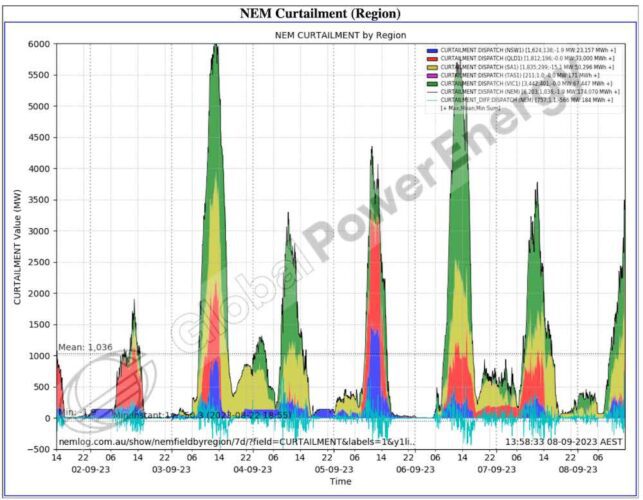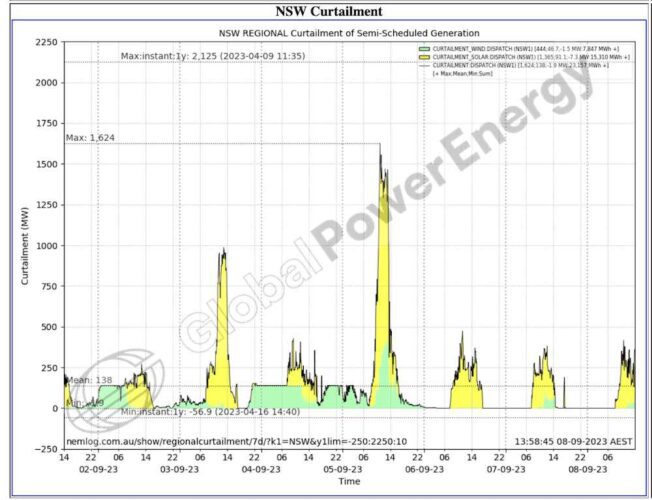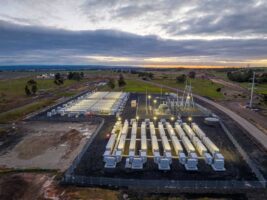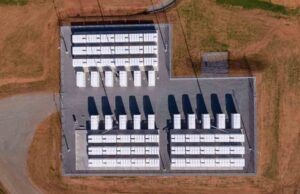Wind and solar hit a new record share of the country’s main grid on Wednesday – reaching a new peak of 67.23 per cent on Wednesday, with rooftop solar leading the way, closely followed by large scale wind and then big solar.
The new record, reached at 11am Sydney time, beat the previous record share of 65.74 per cent reached in October last year, according to data specialists GPE NEMLog2. That percentage number does not include hydro.
And while spring is the season for new wind and solar production records, given the ideal conditions for generation, and the normally mild weather that keeps grid demand relatively low, it’s also the season for high levels of curtailment.
Despite the growing number of big batteries joining the grid, the amount of curtailment has also been hitting record levels in the country’s main grid, with up to 6,000 MW of large scale wind and solar curtailed in the middle of the day at various times this week.
The curtailment is occurring in all states simultaneously and the spot prices have been negative when it happens. Much of this curtailment is voluntary, and some of it is obliged by network constraints or grid management issues. And there is simply not enough storage to deal with this amount of excess capacity.
These charts from GPE NEMLog (the green is Victoria, yellow is South Australia, red is Queensland and blue is NSW) show the level of curtailment during the past week.
There is also a breakdown of the wind and solar components (graph below) and it shows that solar copped the worst of the curtailment in the middle of the day.
This of course can, and will, be addressed by the growth in battery storage, and the number of new batteries that are offering four hours of storage (eight hours in some cases), rather than the single hour of storage that was offered when the focus was on system services.
Multiple new batteries are being built and commissioned – Hazelwood, Torrens Island, Waratah, Riverina, Tailem Bend and Bouldercombe to name just a few – but most are either one or two hours.
Some batteries, such as Torrens Island and Hazelwood, will be expanded to four hour storage to address this exact issue – soaking up excess solar in the middle of the day and transfer them to the evening peak.
In Western Ausralia, where the situation is particularly acute due to fact that it is an isolated grid with a big share of rooftop solar, several new four-hour batteries are being built by Neoen and Synergy to do just that.
See RenewEconomy’s Big Battery Storage Map of Australia












